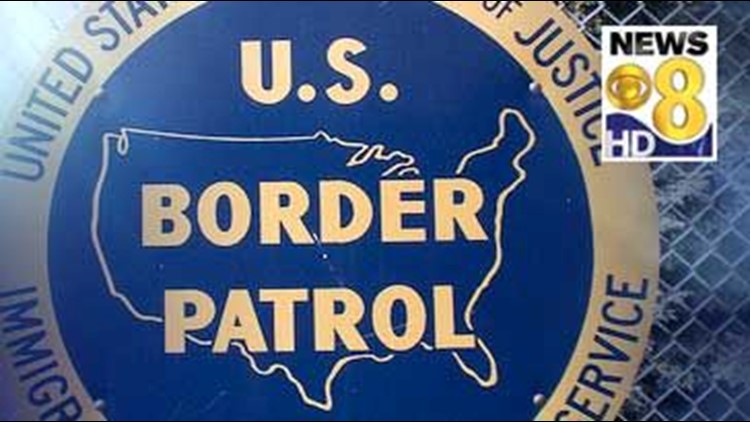SAN DIEGO (AP) — At first glance, the white van seemed full of clean-cut Marines in uniform — not necessarily an unusual sight near the Border Patrol's desert checkpoint along Interstate 8.
But a plainclothes Border Patrol agent who had served in the Marine Corps wasn't fooled — especially when the driver didn't know the birthday of the Marine Corps — something every Marine is taught.
Another agent later noticed that passenger Jose Guadalupe Ceja Jr., a suspected smuggler, didn't seem to understand English, and he and the driver both had nametags reading "Lopez."
A closer look revealed 13 of the people were actually illegal Mexican immigrants and two were suspected U.S. smugglers trying to make it through the checkpoint in camouflage fatigues.
It was a shocking new tactic even for migrant smugglers known to go to great lengths — from stuffing illegal immigrants into the trunks of cars to transporting them in vehicles painted to look TV news trucks and Border Patrol vans — to dodge authorities patrolling the border.
Mexican smugglers often don that country's military uniforms to try to get their illegal loads past authorities. In a 2006 incident that strained U.S.-Mexico relations, traffickers dressed as Mexican soldiers crossed the Rio Grande and were seen helping suspected drug smugglers elude U.S. law enforcement during a chase.
But the use of Marine disguises appears to be one of the first cases of smugglers and immigrants posing as U.S. military.
Former Marine Capt. David Danelo, a senior fellow at Foreign Policy Research Institute in Philadelphia who has authored a book about the U.S.-Mexico border, says smugglers had the unfortunate luck of running into well-trained Border Patrol agents with military experience.
"Should we punish these guys by sending them through four years of basic training?" he joked about the suspects. "The troubling reality and the real question here is, has this ever succeeded before? That's an answer we just don't know."
Indeed, the brazenness raised a host of troubling, still unanswered questions: How did they get the uniforms? Were the uniforms only to trick immigration authorities or did the immigrants have more serious, military intentions?
The Naval Criminal Investigative Service — the investigative arm of the Navy, which includes the Marine Corps — has teamed up with the Border Patrol to find out.
"If people are pretending to be Marines for criminal reasons, we'll want to know why," said Ed Buice, spokesman for the Navy's investigative arm, known as NCIS.
Buice, however, said he couldn't discuss details of the investigation.
"I'm sure they were hoping agents would just see military people in a white van with government plates and just wave them through," Border Patrol spokesman Michael Jimenez said.
The immigrants and smugglers weren't that lucky.
A criminal complaint filed in U.S. District Court in San Diego said the van with a government plate caught the eye of a Border Patrol agent identified only as S. Smith who was driving an unmarked vehicle down the interstate on the night of March 14.
The van with the words "U.S. Government, For official use only" on the license plate seemed suspicious. What's more, one of the numbers reflected light differently when Smith's headlights shined on it.
Smith sped up and passed the van to get a better look: The driver was wearing a military uniform and he could see others in the back wearing Marine Corps caps.
Smith called his colleagues at the nearest checkpoint and told them to do a close inspection of the van when it arrived. He followed and asked the driver during the inspection where they were headed. "Joint Service Base" was the answer.
Smith didn't buy it, especially after seeing one of the numbers on the license plate of the van had been changed from a 0 to an 8.
Another agent, identified only by his last name Robinson, also a former Marine, noticed other anomalies: Some of the group was wearing desert camouflage uniforms and others were wearing urban camouflage uniforms.
He asked Ceja directly if he was a Marine, and he admitted he was not, according to the complaint.
Agents later tracked down Guadalupe Garcia, another smuggling suspect, who was apparently scouting out agents, at a checkpoint outside Jacumba, California, according to the complaint. Marine Corps insignias were found under a passenger seat in his car, authorities said.
Arturo Leyva, another suspect, told authorities he had been asked to smuggle drugs by a man he met at a bar in the border town of Calexico but had backed out, the complaint said. Authorities say he later ran into the man at a bar across the border in Mexicali and agreed to smuggle immigrants.
He was given a cell phone and called on March 14. He was told a taxi would be taking him from his home in El Centro to Calexico.
From there, the men and immigrants went to a trailer park, where a man arrived with a military style duffle bag full of uniforms, the complaint states. The man coached Ceja on how to talk to the Border Patrol and say they were coming from Yuma Air Force base.
It was unclear where the uniforms had been obtained. Marine Capt. Brian Block at the Pentagon said the official attire is the property of service members who buy it when they enter the military and it's up to the individual to keep track of it after they are discharged.
Block said the services strongly encourage military members to maintain control of their uniforms for security reasons, but he acknowledges not everyone heeds the advice.
"You can go into just about any Army-Navy store and pick up old camies if you want to, especially in the San Diego area, where there is a lot of military," he said. "But if you don't have a military ID card, you can't walk onto a base."
Leyva's attorney, Douglas Brown, said his client and the two other U.S. citizens arrested have entered a preliminary plea of not guilty. Ceja's attorney, Martin Molina, declined to comment. Garcia's attorney could not be reached for comment.
It is not known if any of them have a military background or any connection to someone in the armed services.
Copyright 2011 The Associated Press.



